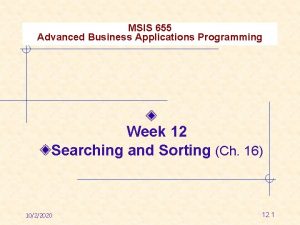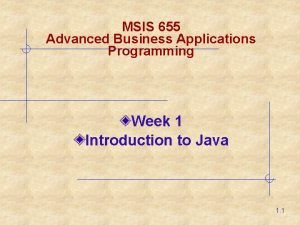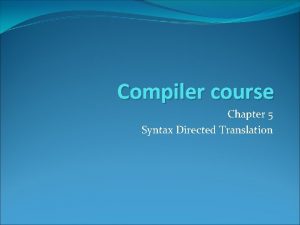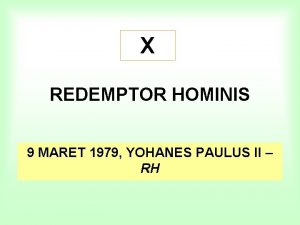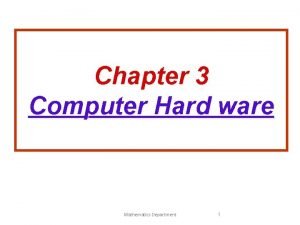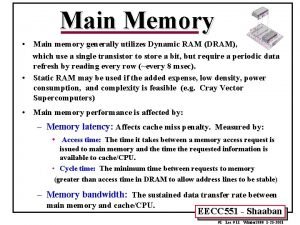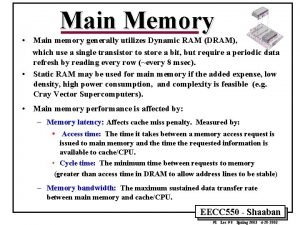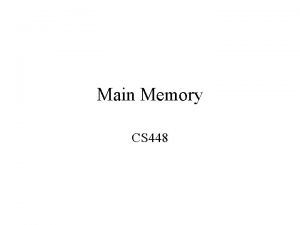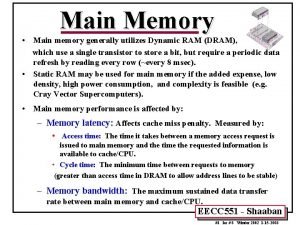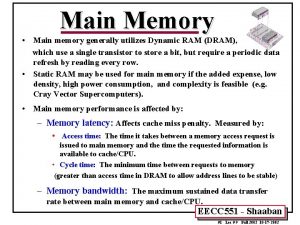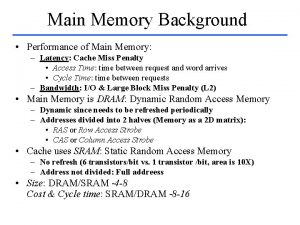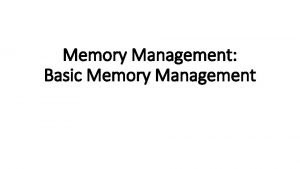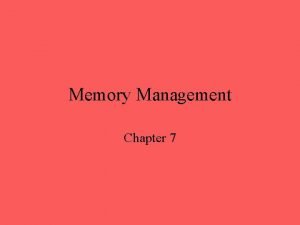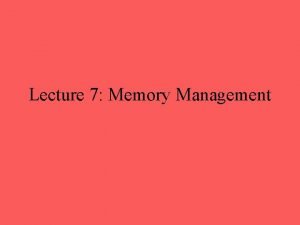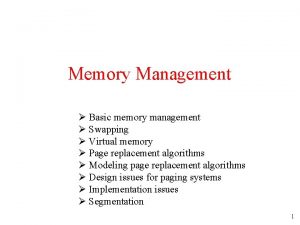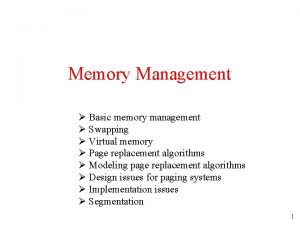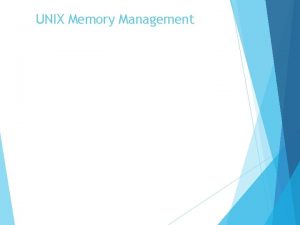Advanced Memory Management Main Points Applications of memory





















- Slides: 21

Advanced Memory Management

Main Points • Applications of memory management – What can we do with ability to trap on memory references to individual pages? • File systems and persistent storage – Goals – Abstractions – Interfaces

Address Translation Uses • Process isolation – Keep a process from touching anyone else’s memory, or the kernel’s • Efficient interprocess communication – Shared regions of memory between processes • Shared code segments – E. g. , common libraries used by many different programs • Program initialization – Start running a program before it is entirely in memory • Dynamic memory allocation – Allocate and initialize stack/heap pages on demand

Address Translation (more) • Program debugging – Data breakpoints when address is accessed • Zero-copy I/O – Directly from I/O device into/out of user memory • Memory mapped files – Access file data using load/store instructions • Demand-paged virtual memory – Illusion of near-infinite memory, backed by disk or memory on other machines

Address Translation (even more) • Checkpoint/restart – Transparently save a copy of a process, without stopping the program while the save happens • Persistent data structures – Implement data structures that can survive system reboots • Process migration – Transparently move processes between machines • Information flow control – Track what data is being shared externally • Distributed shared memory – Illusion of memory that is shared between machines

Web Server

Zero Copy I/O Block Aligned Read/Write System Calls

Virtual Machines and Virtual Memory


Shadow Page Tables

Hardware Support for Virtual Machines • x 86 recently added hardware support for running virtual machines at user level • Operating system kernel initializes two sets of translation tables – One for the guest OS – One for the host OS • Hardware translates address in two steps – First using guest OS tables, then host OS tables – TLB holds composition

VMM Memory Compression

Transparent Checkpoint

Question • At what point can we resume the execution of a checkpointed program? – When the checkpoint starts? – When the checkpoint is entirely on disk?

Incremental Checkpoint

Deterministic Debugging • Can we precisely replay the execution of a multi-threaded process? – If process does not have a memory race • From a checkpoint, record: – All inputs and return values from system calls – All scheduling decisions – All synchronization operations • Ex: which thread acquired lock in which order

Process Migration • What if we checkpoint a process and then restart it on a different machine? – Process migration: move a process from one machine to another – Special handling needed if any system calls are in progress • Where does the system call return to?

Cooperative Caching • Can we demand page to memory on a different machine? – Remote memory over LAN much faster than disk – On page fault, look in remote memory first before fetching from disk

Distributed Virtual Memory • Can we make a network of computers appear to be a shared-memory multiprocessor? – Read-write: if page is cached only on one machine – Read-only: if page is cached on several machines – Invalid: if page is cached read-write on a different machine • On read page fault: – Change remote copy to read-only – Copy remote version to local machine • On write page fault (if cached): – Change remote copy to invalid – Change local copy to read-write

Recoverable Virtual Memory • Data structures that survive failures – Want a consistent version of the data structure – User marks region of code as needing to be atomic • Begin transaction, end transaction – If crash, restore state before or after transaction

Recoverable Virtual Memory • On begin transaction: – Snapshot data structure to disk – Change page table permission to read-only • On page fault: – Mark page as modified by transaction – Change page table permission to read-write • On end transaction: – Log changed pages to disk – Commit transaction when all mods are on disk • Recovery: – Read last snapshot + logged changes, if committed
 Advanced business applications
Advanced business applications Advanced business applications
Advanced business applications Chapter 10 crafting the brand positioning
Chapter 10 crafting the brand positioning Points of parity and points of difference
Points of parity and points of difference Evaluation orders for sdd's
Evaluation orders for sdd's Main points of federalist 78
Main points of federalist 78 Letter from birmingham jail summary
Letter from birmingham jail summary Lahor prostab 1940
Lahor prostab 1940 Main points of federalist 78
Main points of federalist 78 Main supporting points
Main supporting points Redemptor hominis
Redemptor hominis Strategic organization speech
Strategic organization speech Preview of main points
Preview of main points Paraverbal communication definition
Paraverbal communication definition Ralph waldo emerson nationality
Ralph waldo emerson nationality Subpoints in a preparation outline are
Subpoints in a preparation outline are Form of will future
Form of will future Types of main idea
Types of main idea Void main int main
Void main int main Disadvantages of direct mapping
Disadvantages of direct mapping Two kinds of main memory are
Two kinds of main memory are Semiconductor main memory
Semiconductor main memory
